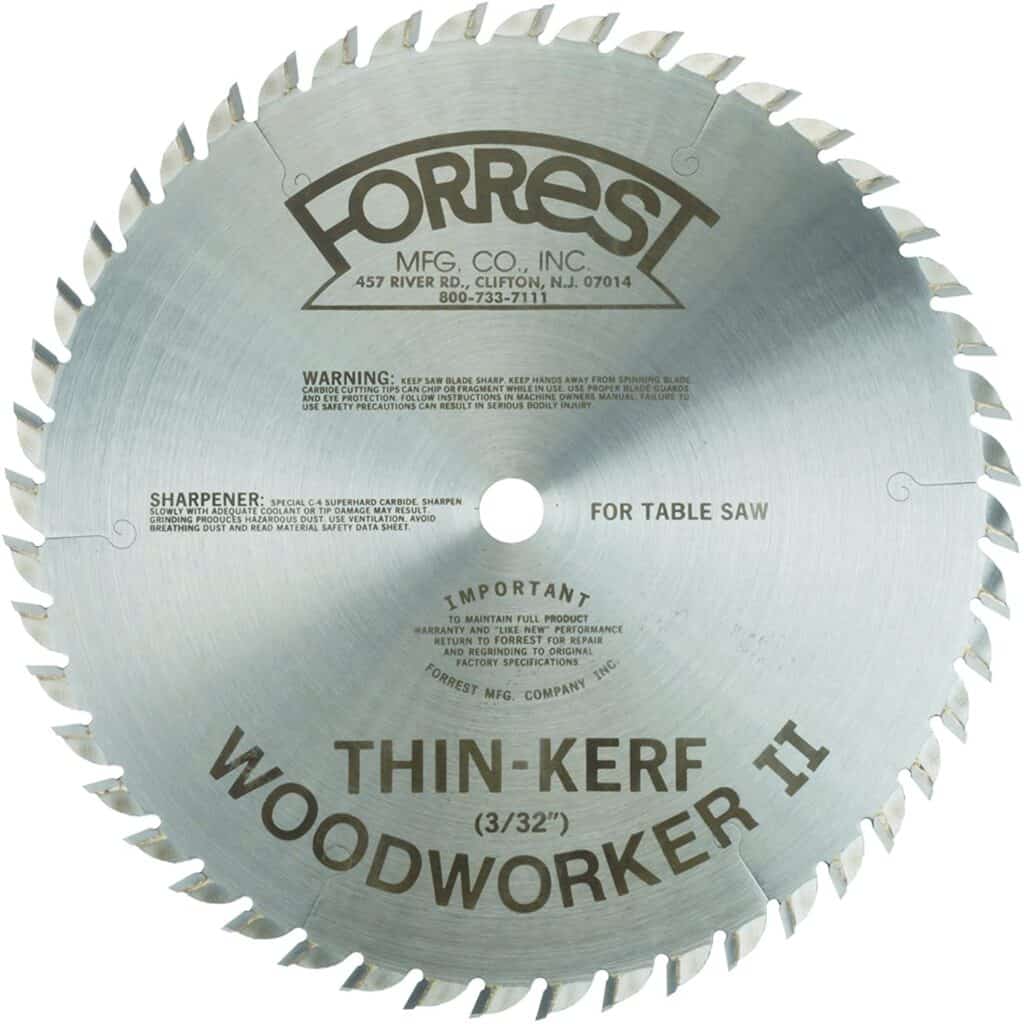Are you that woodworker who doesn’t change the saw blade that comes with your saw? You make every cut with the same blade, and you may think it is okay because, after all, it is cutting the wood.

A few miles into your project, you notice some compromise on the quality of the cuts, which affects your work.
As a result, you may get a lot of chip cuts and blade marks. While it may be true that the saw you are using isn’t fit for your project, consider the various types of table saw blades before buying one.
Choosing the right blade could make all the difference in your saws and the project you make with them, irrespective of the brand. Even the finest of blades won’t perform well if the blade’s design isn’t suited for the task at hand.
Different blades are made for different purposes. If you want to take your work up a notch, you should know how to swap out the blade to another type to achieve your desired results, and that’s what this post is about.
Let’s explore together.
- The combination Blade Type
As the name suggests, they are for multi-purpose woodworking, including making a combination of rips, width grain, and crosscuts along the grain.
To achieve the best of both rip and crosscut, this is the ideal blade. Combination blades cut through harder materials and provide smooth finishes on wood.
One remarkable feature is the large gullets that separate every five sets of teeth giving you room to remove the chips.
Why do you need this saw blade?
It is usual for all woodworkers to possess a blade that will perform all work. It performs cross cuts on hardwoods with very clean outcomes. A suitable one can do crosscutting on two-sided plywood with a single splintering of the veneer.
It is possible to clear a load of work with just this blade for most of your project.
You need to know that:
The finest and top brand multi-purpose blades are quite pricey, but they will cut down a considerable chunk of your work. They have limitations, too; nonetheless, they give back value for your money.
Be aware that these types of blades encounter their trial when ripping hardwoods like Marple. The woods scorch easily (in the event of ripping), even with the finest of blades.
How to identify combination blades and multi-purpose blades
They look different from each other. However, the blade usually performs the same role. See how they differ and compare.
- General-purpose blade
They have somehow deeper gullets, a face angle that alternates, a TBG on its teeth, and teeth ranging between 40 and 50.
- Combination blade
It’s easy to see a combination blade from a distance. Its arranged in clusters of five teeth, and between the groups are deep gullets.
- 2. The Cross-Cut Blade Type
Crosscutting blades offer an extra-fine cut moving across the lumber devoid of scorching or splintering. An extra-smooth cut translates to superior precision and more strong joinery in your work.
What you need to know is that:
Many teeth on your blade equate to a more desirable cut. Your crosscutting blade must feature between 60 and 80 teeth and ATB.
Look carefully at the grind on the teeth. If the 80 toothed blade comes with TCG, put in mind that the blade will be less efficient in crosscutting wood. It’s best suited for plywood and chipboards.
How to identify crosscut blades
Fairly deep gullets are located between the teeth. Its teeth are also made of carbide and mostly consist of angled faces and alternate top bevel grind.
- Rip cut blade Type
Consider using this type of blade when you are ripping thick or hard materials. The more teeth on a blade, the cleaner the cut, but the less efficient it will remove sawdust from the curve.
Why do you need it
A good ripping blade saves you time and energy when working many boards into width. Additionally, it preps edges well for the edge-gluing of panels.
A ripping saw does well in cutting slots for decorative splines. It leaves flat-bottomed grooves that other blades can’t.
You need to know that:
A good ripping blade will not excel in crosscutting and the opposite.
A suitable ripping blade leaves smooth edges regardless of the type of wood. The blades come in flat-top teeth that make them best for making decoration splines. It cuts quickly by design, and its fewer teeth reduce heat, meaning that wood will move through the blade with minimal resistance. A suitable ripping blade has 20 to 30 teeth.
Identifying a Rip Cut Blade
Look out for 20 to 30 teeth a 10″ blade featuring a rake and in-depth gullets. The carbide-made teeth typically have flat faces.
- The Stack Dado Kit Type
You are probably not working at full potential if you do not have a dado blade kit. You can sandwich the equipment on the arbor to form wider grooves in materials. They are very crucial where furniture or cabinet building that needs many types of joints matters.
When you use a table saw to form a dado joint and rabbet, that’s an excellent method to bring together a face frame into a cabinet to get it square and real.
You need to know that:
Use zero–clearance insert to lower or even do away with splintering and chipping while cutting across the plywood’s grain.
In instances where the joint must be invisible, it is acceptable to consider a rounded bottom. The disadvantage here is that they lack complete contact with the joining piece resulting in a less reliable glue joint in the long run.
Cutting a dado for the first time can be alarming because you will be hogging a load of wood in a single pass. You, therefore, need to remain settled as you feed the materials at a slow pace. Remember to make use of the safety blocks.
You may need to acquaint yourself with using sacrificial fences or feather boards to make successful panels, dadoes, and rabbets.
It would help if you didn’t rely on that measuring duct found on the table saw fence tracks while setting the fence. This is because the distance from the outer blade to the fence changes immediately after the dado is set on the table saw.
You should never use a dado kit before arranging the two rounded blades in place; also, be keen on which of them moves left or right on the set-up.
FAQ
What kind of table saw blade do I need?
Narrow down your options and focus on your search for the right kind of blade by considering these points.
- Establish the type of saw you will use the blade. Different blades are designed for different saws, and you only expect poor results or even health hazards if you use the wrong blade on your saw.
- The materials you intend to cut
- The nature of the cuts determines what type of saw bladeyou need to make, either crosscutting or ripping, and the results you expect in all cuts.
- Do you intend to create a blades collection or need a single type of blade to do all your cuts?It’s now you to decide whether you will want to switch from one blade to another each time you want a different cut.
- Consider how powerful your saw is on the blade you want to use and the manufacturers’recommendation.
What is the best table saw blade for hardwood?
Rip blades are best suited for ripping rough and hardwood as they feature suitable teeth for this work. Hardwoods require saw blades with high tolerance and aggressive cuts to dig in the wood fibers leaving no tear and at the same time producing well-polished edges.
Related Article:
Last Updated on January 30, 2022 by John G. Anderson
